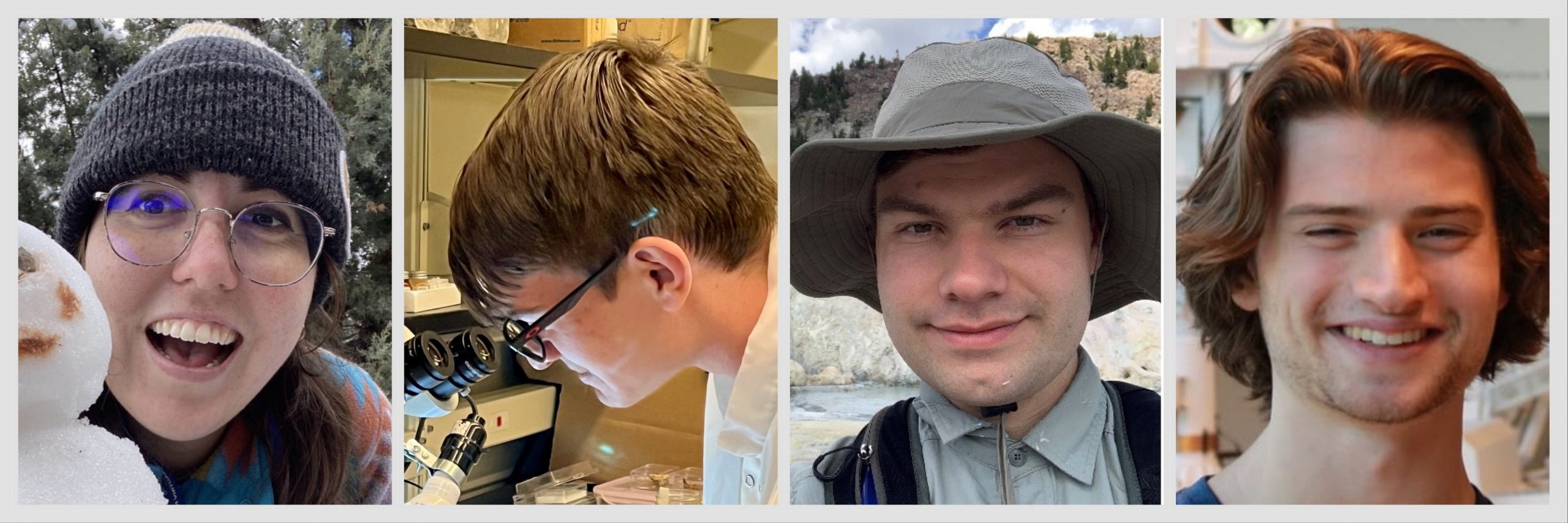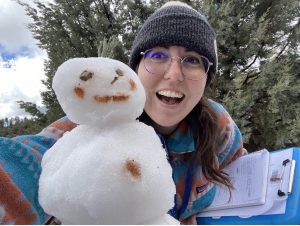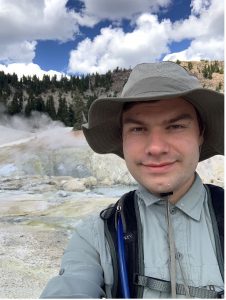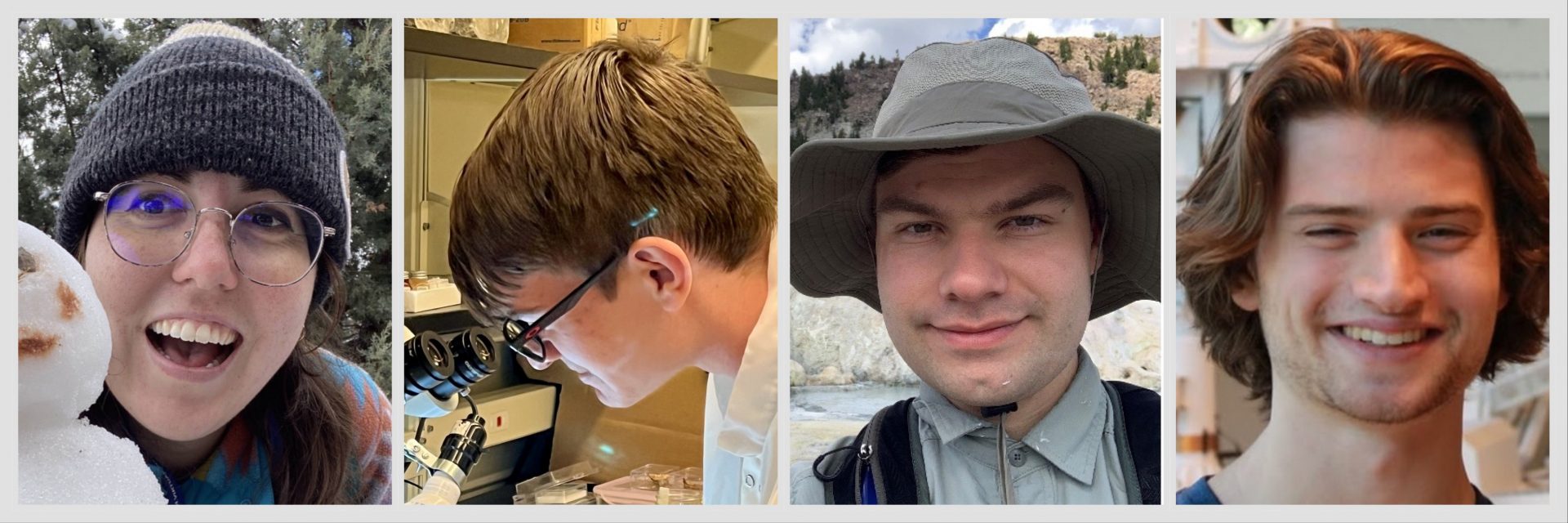2025 Nininger Student Travel Awardees Announced!

The Buseck Center for Meteorite Studies and School of Earth and Space Exploration are pleased to announce the winners of the 2025 Nininger Student Travel Award. The goal of this award is to support attendance of the annual Lunar and Planetary Science Conference (LPSC) for at least 4 undergraduate and/or graduate students to present their latest research.
The awardees are:
 Victoria Concepcion is a 2nd year Ph.D. student in the School of Earth and Space Exploration, working with Dr. Craig Hardgrove on Martian surface geology. Her research utilizes data from the Dynamic Albedo of Neutrons (DAN) instrument on the Curiosity rover to investigate subsurface hydration in Gale Crater. At LPSC, she will present her findings on hydration and elemental trends within the Clay-Sulfate Transition Zone, where the rover has identified hydrated sulfates such as gypsum, starkeyite, and others. Her results provide critical insights into the correlation between subsurface hydration measurements from DAN and mineralogical and elemental observations from other rover instruments. This work contributes to reconstructing the geological history of Gale Crater and improving our understanding of past aqueous processes on Mars. Her research is conducted in collaboration with Sean Czarnecki, Rachel Sheppard, and the Mars Science Laboratory Curiosity Rover Team.
Victoria Concepcion is a 2nd year Ph.D. student in the School of Earth and Space Exploration, working with Dr. Craig Hardgrove on Martian surface geology. Her research utilizes data from the Dynamic Albedo of Neutrons (DAN) instrument on the Curiosity rover to investigate subsurface hydration in Gale Crater. At LPSC, she will present her findings on hydration and elemental trends within the Clay-Sulfate Transition Zone, where the rover has identified hydrated sulfates such as gypsum, starkeyite, and others. Her results provide critical insights into the correlation between subsurface hydration measurements from DAN and mineralogical and elemental observations from other rover instruments. This work contributes to reconstructing the geological history of Gale Crater and improving our understanding of past aqueous processes on Mars. Her research is conducted in collaboration with Sean Czarnecki, Rachel Sheppard, and the Mars Science Laboratory Curiosity Rover Team.
 Christian Kroemer is a 3rd Year Ph.D. student in the School of Earth & Space Exploration at Arizona State University working with Dr. Sujoy Mukhopadhyay. His research focuses on noble gases in Martian meteorites to study Mars’ accretion, early history, and evolution. At LPSC, he will present krypton isotopic measurements across multiple groups of Martian meteorites, represented by Zagami, Los Angeles, Lafayette, and ALH 77005. This research presents further evidence for the potential for a chondritic source as the origin of volatiles across much of Mars’ interior and the consequences for planetary accretion on Mars and other terrestrial planets. This work was done in collaboration with Dr. Sandrine Peron at CNRS Université d’Orléans.
Christian Kroemer is a 3rd Year Ph.D. student in the School of Earth & Space Exploration at Arizona State University working with Dr. Sujoy Mukhopadhyay. His research focuses on noble gases in Martian meteorites to study Mars’ accretion, early history, and evolution. At LPSC, he will present krypton isotopic measurements across multiple groups of Martian meteorites, represented by Zagami, Los Angeles, Lafayette, and ALH 77005. This research presents further evidence for the potential for a chondritic source as the origin of volatiles across much of Mars’ interior and the consequences for planetary accretion on Mars and other terrestrial planets. This work was done in collaboration with Dr. Sandrine Peron at CNRS Université d’Orléans.
 Alexander Layman is a senior Astrophysics and Physics major working with SESE Prof. Jim Bells’ group on Mastcam data analysis. His research focuses on developing methods for detecting iron-nickel meteorites on the surface of Mars by employing the Mastcam multi-spectral imager onboard the NASA Mars Science Laboratory Curiosity rover. He is using three techniques -decorrelation stretch, collecting spectral ratios, and extracting relative reflectancesto find spectral consistencies to identify the meteorites. Once located, these Iron-nickel meteorites can reveal atmospheric and surface processes that influence environmental conditions on Mars. Alex’s current work extends previous searches by exploring Sols 3000-3953.
Alexander Layman is a senior Astrophysics and Physics major working with SESE Prof. Jim Bells’ group on Mastcam data analysis. His research focuses on developing methods for detecting iron-nickel meteorites on the surface of Mars by employing the Mastcam multi-spectral imager onboard the NASA Mars Science Laboratory Curiosity rover. He is using three techniques -decorrelation stretch, collecting spectral ratios, and extracting relative reflectancesto find spectral consistencies to identify the meteorites. Once located, these Iron-nickel meteorites can reveal atmospheric and surface processes that influence environmental conditions on Mars. Alex’s current work extends previous searches by exploring Sols 3000-3953.
 Eric Orson is a senior Barrett Fellow physics major working with Dr. Rhonda Stroud in the Buseck Center for Meteorite Studies. His work is centered around X-ray Computed Tomography (XCT) and electron microscopy analysis of carbonaceous chondrites. At LPSC he will present his research on constraining shock and thermal alteration in the Boorama CO3 chondrite using XCT and electron microprobe data. Boorama is a perfect sample to explore the effects of shock metamorphism on various alteration processes (mobilization of chromite, copper, etc.) since it experienced minimal terrestrial weathering and has a higher shock stage than most COs. This project is the first time a shock fabric has been successfully measured with XCT in a CO chondrite and it fills a gap in the data between CO3.1 and CO3.2 chondrites on the CO 3 chromium distribution scale.
Eric Orson is a senior Barrett Fellow physics major working with Dr. Rhonda Stroud in the Buseck Center for Meteorite Studies. His work is centered around X-ray Computed Tomography (XCT) and electron microscopy analysis of carbonaceous chondrites. At LPSC he will present his research on constraining shock and thermal alteration in the Boorama CO3 chondrite using XCT and electron microprobe data. Boorama is a perfect sample to explore the effects of shock metamorphism on various alteration processes (mobilization of chromite, copper, etc.) since it experienced minimal terrestrial weathering and has a higher shock stage than most COs. This project is the first time a shock fabric has been successfully measured with XCT in a CO chondrite and it fills a gap in the data between CO3.1 and CO3.2 chondrites on the CO 3 chromium distribution scale.
